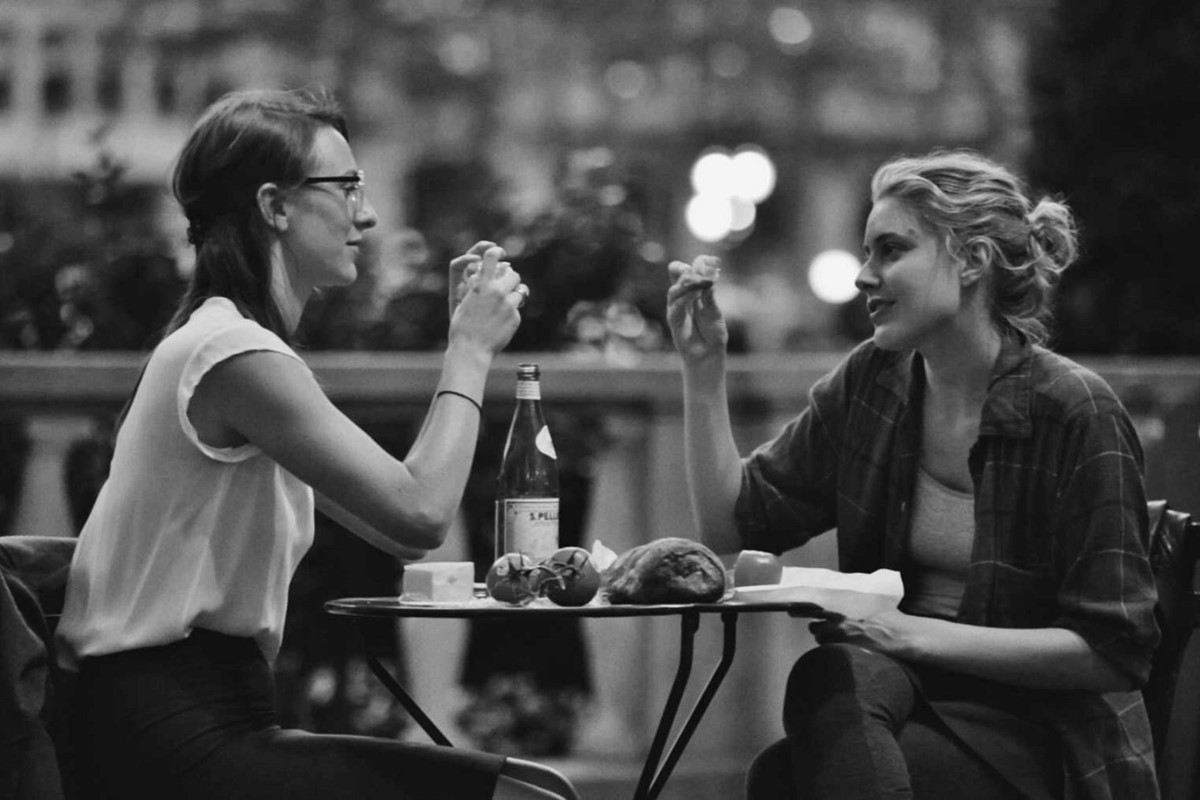
Rewrite
Lead ImageFrances Ha, 2012(Film still)
Nobody talks about it in this way, but the fact is that youth and femininity, combined, are tied up with the history of the movie industry itself.
In the actress-dominated silent movie years of early Hollywood, the bar was set for two kinds of young womanhood on-screen: the worldly femme fatale and the breathless little girl; the flappers who played the game, and the ones who got taken advantage of. Taking this inherent binary as fuel for her feminist argument in From Reverence to Rape: The Treatment of Women in the Movies (1973), Molly Haskell writes about this girlhood-womanhood binary as the essential contradiction of cinema. “Through the myths of subjection and sacrifice that were its fictional currency and the machinations of its moguls in the front offices, the film industry manoeuvred to keep women in their place; and yet these very myths and this machinery catapulted women into spheres of power beyond the wildest dreams of most of their sex.” To assert her point, she points out the unusually high number of women working behind the scenes: many of the era’s most famous actresses – playing innocent, essentially teenaged damsels on screen – simultaneously owned their own production companies or even directed.
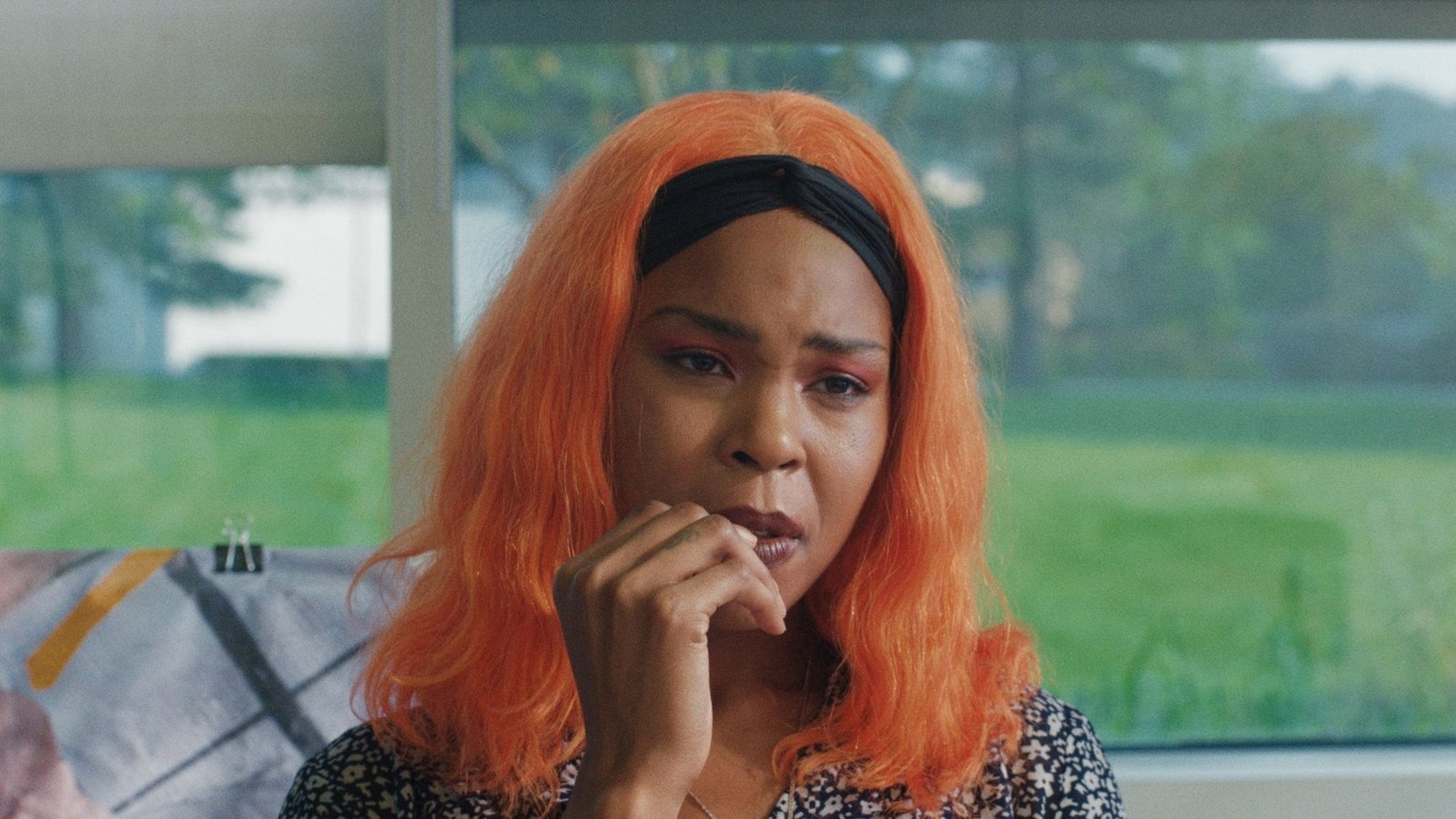
One thing: if the ingenue is as old as cinema itself, that should be enough to tell you that expressions of girlhood, on-screen, have never been strictly about teenagers.
Now, in the era of the made-for-streaming limited series, the usual setting for any coming-of-age – the high-school drama – has become so Netflix-ified and algorithmically coded that, even with a built-in consideration of diversity, it’s becoming harder and harder to get a hook into anything real-feeling. (Proof of the dead-end of such formulas: the stranglehold of the 2000s remake of the 1990s success story.)
What lies outside of that space? Not only are nearly none of the films in Not Just a Girl, Mubi’s latest girlhood-focused season, set in high school, but very few of the protagonists are, really, still girls. Frances Halladay, the heroine of Noah Baumbach’s Frances Ha, is 27 years old. Jane, the third assistant to an abusive movie mogul (The Assistant, 2019) and Palace, the Black artist MFA graduate played by artist Diamond Stingily in The African Desperate (artist Martine Syms’ mordantly funny debut, 2022), are trying to embark on creative careers. It’s not an accident, I think, that many of Not Just a Girl’s films showcase women traversing the world of work in their twenties. The expressions of patriarchy found there, whether in the invisible indignities of a modern-day office or academic institution, or the more explicit environment of a Times Square porno cinema (Variety, 1983), are felt by the viewer to be hard-edged, fixed. Various aggressions, in macro and micro, block our heroines; they move through quests, even in the space of a single day, that involve hurdling constant obstacles. And they are required to behave.
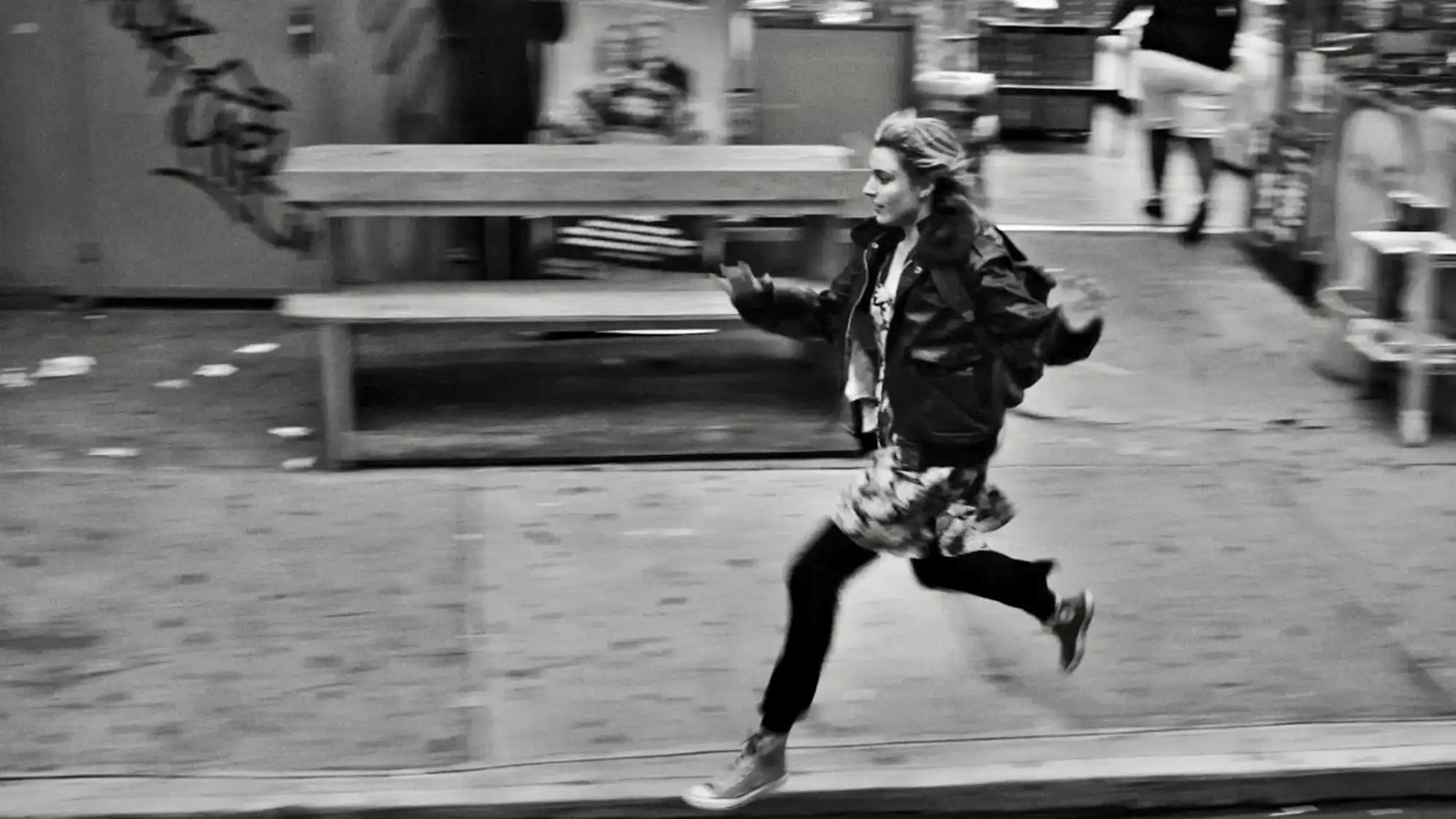
It made me think about the role of environment in expressions of girlhood on screen, and how it’s often more important than age. Such settings play a role in how we move with such girls on-screen, which is another way of saying, how we get to know them, maybe even see with them.
One way to hurdle over cinema’s built-in gaze on its pretty young women is to run right through them. Greta Gerwig is an artist who has always turned on such movements: dancing, sprinting, pure acceleration. In Noah Baumbach’s Frances Ha, the titular character, played by Gerwig, runs and skips along a New York street like Denis Lavant in Mauvais Sang (1986); such moments are the breathing space to the indignity of the character constantly moving to more and more cramped apartments, like a 2010s Brooklyn version of Wharton’s House of Mirth. I had never seen Variety, but I enjoyed how it, too, confines its protagonist, Christie, into the cramped space of the X-rated cinema’s ticket booth while Gordon simultaneously performs her own twist on the gaze upon young, nubile female bodies that have defined cinema through the protagonist’s journey of detective-like discovery. Spurred on by Laura Mulvey’s seminal essay, Visual Pleasure and Narrative Cinema, the Kathy Acker-scripted feature is the result of its director setting out, instead, to make “a story about [the girl] looking.”
The life of every one of Andrea Arnold’s films, too, begins as a single image. For Fish Tank (2009), the director has said, this was “an image of an angry young girl, (who) was doing something strong in an environment that wasn’t her own.”
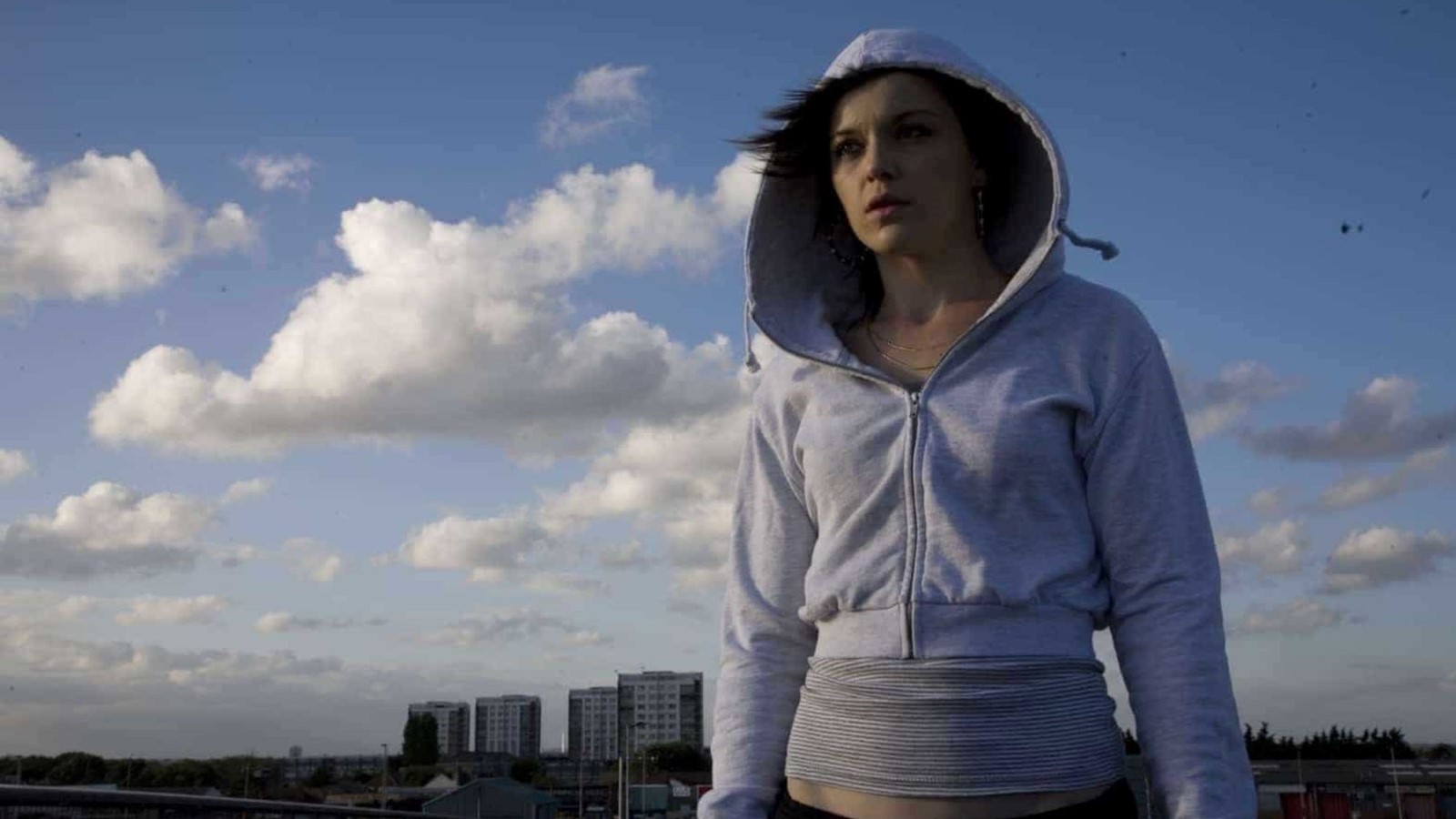
That says something. I’ve always felt Fish Tank to be one of the most important films ever made about girlhood, but until rewatching more recently, I didn’t realise the key might lie in that statement. The film, after all, hits many of the same plot beats of countless movies starring young women: adolescent ennui and rebellion, tensions between mother and daughter, and loss of innocence at the hands of a predatory man. But part of Fish Tank’s power is how it hits those beats and yet does something so very different. We move and feel with Mia through contrasting spaces that contract and expand around her small, rageful figure: the council estate apartment she shares with her mother and sister, the flat, open dead space in which she incongruously finds a white horse chained up, the tower block room in which she dances alone, friendless. And then she does something strong, somewhere she is not supposed to be: too strong, impossible to forget and perhaps for some viewers, to forgive.
Speaking of the space inside a movie, what about when the space of the movie itself is limited? Appropriately for its runtime, short film Lick the Star – the director’s 1998 debut – is one of director Sofia Coppola’s most direct and bludgeoning statements of the potential cruelty of girlhood. It’s almost more effective given the 90s context it is made in: the girls look like they could be in The Craft or My So-Called Life, but the story Coppola tells is brutal, almost offensive; like high-school friendships in real life, popularity is shown to swing one way or another in under 12 minutes. It’s cut short and cutting. It makes me think of teenage girls saying: I’m dead.
Where filmmakers like Sofia Coppola and Andrea Arnold differ in their aesthetic and spiritual approaches to girlhood (certainly in terms of class), they share a common certitude: they take this phase of life seriously. For such artists, girlhood has proved to be a lifelong examination. Think, too, of the wider group of women collaborators on such projects: Greta Gerwig, Baumbach wife and girl-muse turned director, who has continually examined the balancing act of girlhood and womanhood with her adaptations of Little Women and that other shared cultural text of femininity: Barbie, property of Mattel. Even Nan Goldin, who appears as a character in Variety as a collaborator of Gordon’s, has continually made work in memory of her younger sister, who took her own life aged 18: something clear in the moving video installation, Sisters, Saint, Sybils (2004-22), that showed in a spooky church in London’s Charing Cross this summer.
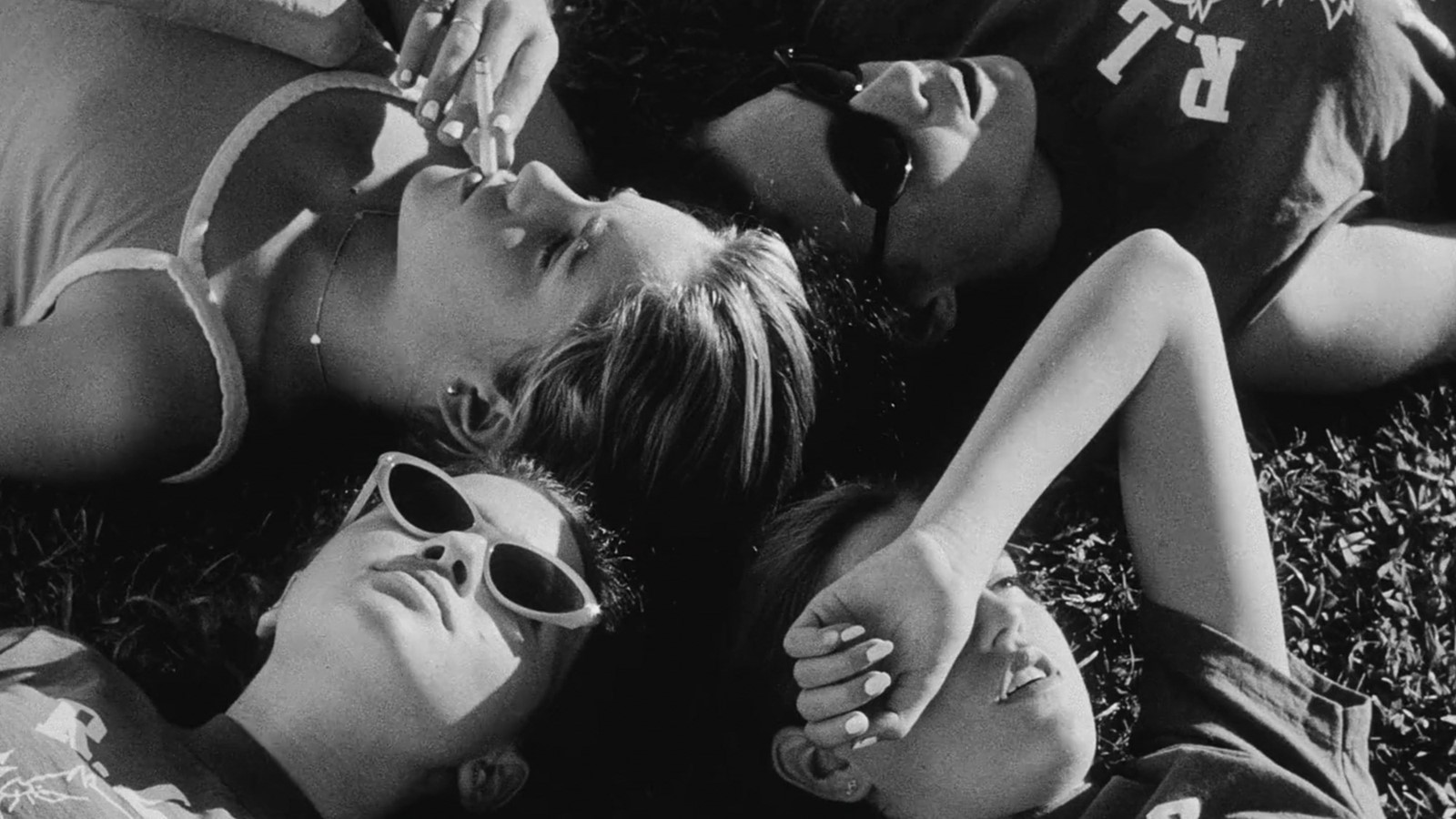
Regular readers will know I’ve never strictly understood girlhood as a defined period of time. That’s why I’m interested, as I began with, in how ideas of girlhood have been intertwined with the very fact of filmmaking from the beginning. Looking at the current moment, it’s also why I feel a sense of communion with the filmmakers and artists here: for whom the experiences and events of girlhood are not something we have to leave behind. Or perhaps it is more compulsive than that: perhaps we simply can’t, because there is so much more to give form to still.
The Not Just a Girl season is streaming on Mubi now.
in HTML format, including tags, to make it appealing and easy to read for Japanese-speaking readers aged 20 to 40 interested in fashion. Organize the content with appropriate headings and subheadings (h1, h2, h3, h4, h5, h6), translating all text, including headings, into Japanese. Retain any existing
tags from
Lead ImageFrances Ha, 2012(Film still)
Nobody talks about it in this way, but the fact is that youth and femininity, combined, are tied up with the history of the movie industry itself.
In the actress-dominated silent movie years of early Hollywood, the bar was set for two kinds of young womanhood on-screen: the worldly femme fatale and the breathless little girl; the flappers who played the game, and the ones who got taken advantage of. Taking this inherent binary as fuel for her feminist argument in From Reverence to Rape: The Treatment of Women in the Movies (1973), Molly Haskell writes about this girlhood-womanhood binary as the essential contradiction of cinema. “Through the myths of subjection and sacrifice that were its fictional currency and the machinations of its moguls in the front offices, the film industry manoeuvred to keep women in their place; and yet these very myths and this machinery catapulted women into spheres of power beyond the wildest dreams of most of their sex.” To assert her point, she points out the unusually high number of women working behind the scenes: many of the era’s most famous actresses – playing innocent, essentially teenaged damsels on screen – simultaneously owned their own production companies or even directed.

One thing: if the ingenue is as old as cinema itself, that should be enough to tell you that expressions of girlhood, on-screen, have never been strictly about teenagers.
Now, in the era of the made-for-streaming limited series, the usual setting for any coming-of-age – the high-school drama – has become so Netflix-ified and algorithmically coded that, even with a built-in consideration of diversity, it’s becoming harder and harder to get a hook into anything real-feeling. (Proof of the dead-end of such formulas: the stranglehold of the 2000s remake of the 1990s success story.)
What lies outside of that space? Not only are nearly none of the films in Not Just a Girl, Mubi’s latest girlhood-focused season, set in high school, but very few of the protagonists are, really, still girls. Frances Halladay, the heroine of Noah Baumbach’s Frances Ha, is 27 years old. Jane, the third assistant to an abusive movie mogul (The Assistant, 2019) and Palace, the Black artist MFA graduate played by artist Diamond Stingily in The African Desperate (artist Martine Syms’ mordantly funny debut, 2022), are trying to embark on creative careers. It’s not an accident, I think, that many of Not Just a Girl’s films showcase women traversing the world of work in their twenties. The expressions of patriarchy found there, whether in the invisible indignities of a modern-day office or academic institution, or the more explicit environment of a Times Square porno cinema (Variety, 1983), are felt by the viewer to be hard-edged, fixed. Various aggressions, in macro and micro, block our heroines; they move through quests, even in the space of a single day, that involve hurdling constant obstacles. And they are required to behave.

It made me think about the role of environment in expressions of girlhood on screen, and how it’s often more important than age. Such settings play a role in how we move with such girls on-screen, which is another way of saying, how we get to know them, maybe even see with them.
One way to hurdle over cinema’s built-in gaze on its pretty young women is to run right through them. Greta Gerwig is an artist who has always turned on such movements: dancing, sprinting, pure acceleration. In Noah Baumbach’s Frances Ha, the titular character, played by Gerwig, runs and skips along a New York street like Denis Lavant in Mauvais Sang (1986); such moments are the breathing space to the indignity of the character constantly moving to more and more cramped apartments, like a 2010s Brooklyn version of Wharton’s House of Mirth. I had never seen Variety, but I enjoyed how it, too, confines its protagonist, Christie, into the cramped space of the X-rated cinema’s ticket booth while Gordon simultaneously performs her own twist on the gaze upon young, nubile female bodies that have defined cinema through the protagonist’s journey of detective-like discovery. Spurred on by Laura Mulvey’s seminal essay, Visual Pleasure and Narrative Cinema, the Kathy Acker-scripted feature is the result of its director setting out, instead, to make “a story about [the girl] looking.”
The life of every one of Andrea Arnold’s films, too, begins as a single image. For Fish Tank (2009), the director has said, this was “an image of an angry young girl, (who) was doing something strong in an environment that wasn’t her own.”

That says something. I’ve always felt Fish Tank to be one of the most important films ever made about girlhood, but until rewatching more recently, I didn’t realise the key might lie in that statement. The film, after all, hits many of the same plot beats of countless movies starring young women: adolescent ennui and rebellion, tensions between mother and daughter, and loss of innocence at the hands of a predatory man. But part of Fish Tank’s power is how it hits those beats and yet does something so very different. We move and feel with Mia through contrasting spaces that contract and expand around her small, rageful figure: the council estate apartment she shares with her mother and sister, the flat, open dead space in which she incongruously finds a white horse chained up, the tower block room in which she dances alone, friendless. And then she does something strong, somewhere she is not supposed to be: too strong, impossible to forget and perhaps for some viewers, to forgive.
Speaking of the space inside a movie, what about when the space of the movie itself is limited? Appropriately for its runtime, short film Lick the Star – the director’s 1998 debut – is one of director Sofia Coppola’s most direct and bludgeoning statements of the potential cruelty of girlhood. It’s almost more effective given the 90s context it is made in: the girls look like they could be in The Craft or My So-Called Life, but the story Coppola tells is brutal, almost offensive; like high-school friendships in real life, popularity is shown to swing one way or another in under 12 minutes. It’s cut short and cutting. It makes me think of teenage girls saying: I’m dead.
Where filmmakers like Sofia Coppola and Andrea Arnold differ in their aesthetic and spiritual approaches to girlhood (certainly in terms of class), they share a common certitude: they take this phase of life seriously. For such artists, girlhood has proved to be a lifelong examination. Think, too, of the wider group of women collaborators on such projects: Greta Gerwig, Baumbach wife and girl-muse turned director, who has continually examined the balancing act of girlhood and womanhood with her adaptations of Little Women and that other shared cultural text of femininity: Barbie, property of Mattel. Even Nan Goldin, who appears as a character in Variety as a collaborator of Gordon’s, has continually made work in memory of her younger sister, who took her own life aged 18: something clear in the moving video installation, Sisters, Saint, Sybils (2004-22), that showed in a spooky church in London’s Charing Cross this summer.

Regular readers will know I’ve never strictly understood girlhood as a defined period of time. That’s why I’m interested, as I began with, in how ideas of girlhood have been intertwined with the very fact of filmmaking from the beginning. Looking at the current moment, it’s also why I feel a sense of communion with the filmmakers and artists here: for whom the experiences and events of girlhood are not something we have to leave behind. Or perhaps it is more compulsive than that: perhaps we simply can’t, because there is so much more to give form to still.
The Not Just a Girl season is streaming on Mubi now.
and integrate them seamlessly into the new content without adding new tags. Ensure the new content is fashion-related, written entirely in Japanese, and approximately 1500 words. Conclude with a “結論” section and a well-formatted “よくある質問” section. Avoid including an introduction or a note explaining the process.


